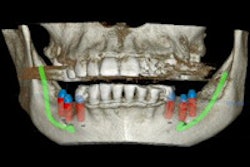The traditional decayed, missing, and filled surfaces (DMFS) system for quantifying caries significantly overestimates the actual prevalence of the disease, according to new research presented at this week's 2016 American Association of Dental Research (AADR) annual meeting in Los Angeles.
Researchers from the University of Alabama at Birmingham used a case series analysis to determine if caries overestimation exists. They compared traditional DMFS counting to modified DMFS scores based on actual counts of caries from pretreatment study visits and records of 19 infants. The children all had a low socioeconomic status and were from a minority population, placing them at an increased risk for caries.
The study found that the traditional DMFS score overestimated the amount of caries the children had because it assumes all surfaces of crowned and missing teeth were affected.
The researchers also found pretreatment data significantly underestimated actual and traditional of caries counts. There is a need to develop a new chart review-based score that better merges traditional scoring with pretreatment data, they concluded.



















